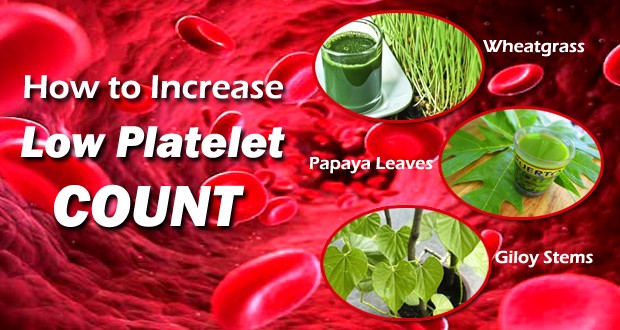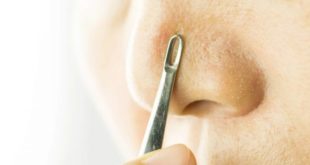
Platelets can be defined as those parts of our blood that help the blood clot. They are tiniest among the blood cells, much smaller than red or white blood cells. Platelets are present in large numbers in our body. Millions of platelets work to keep us healthy and fit.
Why are platelets important?
Whenever there are damaged blood vessels in our body, the platelets bind together so that the bleeding stops. Platelets help in clotting blood at the damaged site. Whenever you get cuts and bruises, platelets start working to clot the blood at the site of wound so that you may stop bleeding.
What is the normal platelet count?
A normal or healthy platelet count ranges from 150,000 to 450,000 platelets per micro liter of blood. When a person has less than 150,000 platelets, the condition is known as thrombocytopenia. And if the platelet count goes above 450,000 platelets then it is called thrombocytosis. The platelet count of any person can be known through a laboratory blood test.
As we are discussing low platelet count remedies, we will stick to the topic of thrombocytopenia here.
What causes low platelet count?
There are three main causes due to which platelet count decreases and goes below the normal count:
- Enough platelets are not being made in the bone marrow
- Platelets are getting destroyed in the bloodstream of the patient
- Platelets are getting destroyed in the spleen or the liver
Now, why do these platelets get destroyed? The reasons include:
- Certain medicines
- Autoimmune disorders
- Certain cancers like leukemia or lymphoma
- Chemotherapy provided to treat cancer
- Kidney problems including disorders and infections
- Consuming too much alcohol
What are the symptoms of low platelet count?
When you bruise yourself easily or experience frequent bleeding from the gums, nose, or GI tract, you may go in for the platelet counts test. This is when you have a low platelet count which is below 150,000. If your platelet count goes further down, below 50,000, you may bleed due to your everyday activities too.
What is the treatment for low platelet count?
If you have a mild thrombocytopenia, you may not need any treatment but it is a good idea to consult your doctor. However, if you have a severe or chronic thrombocytopenia, you need treatment which should be based on the causes of your low platelet count. The treatment for low platelet count usually includes the following:
- Treating the underlying cause of low platelet count
- Blood or platelet transfusion
- Medicines to boost the count of platelets. Sometimes corticosteroid or even stronger medicines are prescribed when the condition is due to immune system issues.
- Surgery (splenectomy). If the platelets are being destroyed in the spleen and no treatment works, your doctor can suggest a surgery to remove the spleen.
- Plasma exchange is done in cases of medical emergency
How to increase the platelet count naturally?
When you want to naturally increase your low platelet count, there are only two remedies- food and lifestyle!
While you need to avoid certain foods that cause low platelets, you have to include those foods in your diet that are helpful in increasing the platelet count to normal. More on lifestyle changes later. First know what foods to eat to boost your platelet count.
But before knowing these foods let’s know this fact- apart from food, there are certain ingredients that are believed to increase platelet counts considerably. These are the herbal remedies for platelet.
Herbal Remedies to Increase a Low Platelet Count
Papaya leaf juice for low platelet count
Papaya leaf juice had been used traditionally by many ancient medicines, such as Ayurveda, to treat thrombocytopenia and other conditions that cause low platelet count like Dengue fever. Of late, many scientific studies too have been carried out to know about the effectiveness of papaya leaf extract. An experiment conducted in 2013 on mice in Sri Lanka, found out that fresh Carica papaya leaf extract significantly increases the platelet and RBC counts. In 2013 only, another study was conducted in Malaysia for investigating the platelet increasing property of Carica papaya leaves juice in patients with dengue fever and dengue hemorrhagic fever. The study concluded that papaya leaves juice significantly increased the platelet count in patients with dengue fever and dengue hemorrhagic fever.
How to make papaya leaf juice to increase a platelet count
Get this:
- Papaya leaves- 2-3
- Honey (optional)- 1-2 tsp
Do this:
- Wash the papaya leaves properly
- Chop the leaves
- Crush them using mortar and pestle or whatever way you like. You will get a paste of papaya leaves.
- Using a cloth or pressing with palms, extract the juice from the paste of papaya leaves.
- Have this juice.
- Repeat at least twice a day.
- If you find this papaya leaf juice bitter and can’t have it, add some honey and then have it.
Giloy Herbal Remedy to Increase Low Platelet Count
Ayurveda also talks about another herb, Giloy, which miraculously increases the platelet count. Giloy (Tinospora Cordifolia), also known as Amrita has antibacterial, anti-inflammatory, anti-rheumatic, and anti-allergic actions. It strengthens the immune system effectively. This herb is said to increase the killing ability of macrophages in the body that are responsible for combating micro-organisms and foreign bodies. The stem of giloy plant is used to extract the juice that helps in increasing the count of platelets in the body.
How to make giloy juice to increase platelet count
Get this:
- Giloy stems (4-5 cm long)- 4-5
- Tulsi (holy basil)- 4-5
- Water- 2-3 glass
Do this
- Soak the giloy stems in water overnight.
- Boil these soaked stems and tulsi leaves in about 2-3 glasses of water till the time the quantity remains half of its original quantity.
- Let it cool down.
- Have it 2-3 times a day
Wheatgrass to Increase Low Platelet Count
Benefits of wheatgrass are no more a secret. Rich in chlorophyll, minerals like magnesium, selenium, zinc, chromium, and antioxidants like beta-carotene, vitamin E, C, B12, as well as iron, folic acid, pyridoxine and various other minerals, amino acids and enzymes, wheatgrass has been accepted as one of the super herbs of our times. It has excellent nutritious and medicinal value along with having anti-anemic properties. All this make wheatgrass juice one of the best remedies for low platelet count. In 2011, a study conducted by the International Journal of Universal Pharmacy and Life Sciences concluded that wheatgrass juice shows beneficial effect in thrombocytopenia by increasing platelet count considerably.
How to make wheatgrass juice to increase platelet count
Get this:
- Wheatgrass (roughly chopped)- 1/2 cup
- Mortar and pestle or blender or wheatgrass juicer
- Strainer or sieve
Do this:
- Rinse the wheatgrass thoroughly. If you see mold, discard it and get a fresh batch.
- Chop the rinsed wheatgrass roughly. You must have at least half a cup chopped wheatgrass.
- Now using a mortar and pestle, crush the wheatgrass to get its paste.
- You can also use blender or a juicer specifically meant for wheatgrass juice extraction. Normal juicer won’t be able to extract wheatgrass juice.
- If you don’t use wheatgrass juicer, you will need a strainer or sieve to press and extract the juice of crushed wheatgrass.
- Dilute this juice with water and have it
- Have 2-3 servings of wheatgrass in a day.
Aloe Vera for Low Platelets
Aloe Vera has over 200 active components that include vitamins, minerals, amino acids, enzymes, polysaccharide, and fatty acids! Ayurveda and many other traditional medicines believe in aloe vera as one of the miraculous herb provided by nature. It has disinfectant, anti-biotic, anti-microbial, germicidal, anti-bacterial, anti-septic, anti-fungal and anti-viral properties. It also boosts the immune systems. The polysaccharides present in aloe vera gel stimulate macrophages that combat viruses and other foreign bodies. The antioxidant of aloe vera also makes it an effective remedy for increasing low platelet count.
How to make aloe vera juice to increase platelet count
Get this:
- Aloe vera leaf- 1/4 – 1/2
Do this:
- Wash the aloe leaf and discard its outer covering using a sharp knife
- Take out the aloe gel from inside the leaf by scraping it with knife
- Blend the gel, if needed with some water.
- Have this twice a day.
Super Herbal Concoction for Platelet Count
By far, the above four herbs are the most effective ingredients that can increase platelet count faster. If you mix all these four juices and have it daily 1-2 times a day, this will be the best remedy for low platelet count. You can even add some flavors like lemon juice along with some honey to make it a delicious juice.
Get this:
- Papaya leaf- 1-2
- Wheatgrass (chopped)- ¼ cup
- Giloy juice (make it as described above)- ½ cup
- Aloe vera gel- ½ cup
- Lemon juice (optional)- 2-3 tsp
- Honey (optional)- 2-3 tsp
Do this:
- Rinse and crush the papaya leaves and wheatgrass and extract their juices.
- Blend aloe vera gel, using some water if needed.
- Combine papaya leaves juice, wheatgrass juice, aloe vera juice and giloy juice.
- If using lemon juice and honey, add them to this juice mixture and mix well.
- Have this 1-2 times a day.
Foods to Increase Platelet Count
Your diet basically needs to be an anti-inflammatory diet that reduces oxidative stress or inflammation. Foods rich in anti-oxidants are best for those who suffer from low platelet count.
Have Vitamin K rich Foods
The Platelet Disorder Support Association recommends a macrobiotic contractive diet which includes such foods as leafy green vegetables that are rich in vitamin K. Vitamin K is meant for blood clotting and also has anti-inflammatory properties. As you now know, inflammation can also cause platelet destruction. You, thus, need to have anti-inflammatory foods. Have those foods that are rich in vitamin K. This vitamin assists in boosting the platelet count and also helps platelets stick to each other so that they can effectively clot blood when needed.
- Leafy greens like spinach, lettuce and parsley
- Kale
- Swiss chard
- Broccoli, Brussels sprouts and cauliflower
- Olive
- Soybean
- Seaweeds
- Eggs
Have Vitamin B9 rich Foods
Vitamin B9 or folate plays a major role in cell division process. Platelets are cells and this vitamin can help them increase by cell division. In fact, deficiency of folate can also lead to low platelet count.
- Asparagus
- Oranges
- Spinach
- Whole grain
Have Foods rich in Omega 3 Fatty Acids
Omega 3 fatty acids have been undoubtedly accepted as one of the best sources of anti-inflammatory diet. They also boost your immune system and thus are effective in increasing platelet count.
- Fish
- Seaweeds
- Walnuts
- Flaxseed and its oil
- Eggs
Eat Antioxidant rich Fruits and Vegetables
When someone suffers from low platelets, it is often due to an immune response to platelets. Doctors usually prescribe steroids in such conditions as they are immune suppressant. They also prescribe anti-inflammatory medication. As such, an anti-inflammatory diet should also be helpful when it comes to support one’s immune system. Have lots of fruits and vegetables that are a rich source of antioxidants.
- Blueberries, blackberries and raspberries
- Red guava
- Nuts
- Dark green veggies
- Sweet potatoes
- Orange vegetables like pumpkin and squash
- Green tea
- Beetroot and its juice
Problem Foods for Low Platelet Count
Some foods are not good when you suffer from low platelet count. These foods cause low platelets. When you eliminate these problem foods from your diet, you may help raise your platelet count. The most common offenders are foods that contain quinine such as tonic water, bitter lemon, and bitter melon; aspartame which is present in diet soda, sugar-free and low-fat candy, cakes etc.; and alcohol meaning beer, wine, or hard liquor.
Avoid Foods containing Quinine
Quinine is the bitter tasting powder derived from the bark of cinchona tree. You might have heard its name in reference with malaria treatment. Quinine is also used to treat nocturnal leg cramps. However, the potential side effects of quinine are far more than its benefits. One of the side effects of quinine is decrease in platelets. So, avoid having drinks and foods that contain even small quantities of quinine.
- Tonic water (a bitter liquid which is used as a mix for alcoholic drinks)
- Bitter lemon and lime (they are produced by many companies and contain tonic water)
Avoid Foods containing Aspartame
Aspartame, as you might know, is the most popular low-calorie sweetener. And to bust the myth, it is not calorie free as claimed by diet foods that use aspartame as one of their ingredients. Apart from negatively effecting platelets, it also causes cancers. So avoid Low-calorie and sugar-free drinks as almost all of them contain aspartame.
- Diet sodas
- Energy drinks
- Coffee flavorings
- Protein shakes
- Flavored milk and juices as well as other flavored beverages
- Low-fat yogurt, pudding, gelatin and fruit cups may contain aspartame
- Ice cream, frozen fruit pops, hard candy and chewing gum may also contain aspartame
- Sugar-free sweet foods such as breath mints, syrups and jellies may also contain aspartame
- Ketchup, dressings, sauces and marinades can also contain aspartame
- Aspartame may also be present in certain prescription and over-the-counter medications
Always read the ingredients label to make sure what you eat doesn’t have aspartame.
Avoid Gluten when Low Platelet is due to Autoimmune Diseases
Celiac disease which is an autoimmune disease of the small bowel caused by a cross-reaction to the gluten in wheat, barley, rye, and other such grains, has been associated with low platelets. Gluten sensitivity is also an autoimmune disorder that may lead to low platelet counts. So avoid foods containing gluten if you suffer from such autoimmune diseases.
- Wheat
- Semolina
- Barley
- Oats that are processed in plants that produce gluten-containing grains (Oats themselves don’t contain gluten)
- Rye
So, along with anti-inflammatory diet, you also need to have gluten-free diet if your low platelet count is due to autoimmune disease.
Other Food and Lifestyle Tips to Increase Platelet Count
In the beginning, when talking about the remedies for low platelet count, it was said that food and lifestyle are two aspects that can help positively in platelet count. In fact, food is also a part of your lifestyle. What, when and how you eat, all depend upon your lifestyle. Bringing certain changes in food habits and your lifestyle may increase your platelet count faster.
- Get adequate sleep and rest. Stress affects your platelet count negatively.
- Have at least one serving of green leafy vegetables daily.
- Eliminate junk food and processed foods along with the problem foods discussed above, from your diet.
- Have healthy diet which includes lots of organic foods, fruits and vegetables.
- Whenever having raw foods, wash them thoroughly. This will remove any parasites or viruses that may result in low platelet counts. Toxic chemicals used in various pesticides and chemicals as well as in processed foods may inhibit the growth of new platelets.
- Instead of eating raw vegetables when you have a low platelet count, you may also consider having slightly steamed vegetables for ease of digestion. This will also not damage your intestinal lining.
- Have cod liver oil or flax seed oils. They reduce inflammation and also improve blood circulation.
- Decrease the consumption of those foods that can interfere with blood clotting such as onions, tomatoes, grapes, garlic, ginger etc.
- Avoid having refined sugars, saturated fats, processed foods and grains as well as carbonated beverages as these foods may cause the platelets to decrease.
- Also avoid having dairy products, alcohol and food additives while your platelet count is low.
- Take steps to boost your immune system.
- Exercise regularly but be careful while doing so. Cardiovascular exercises such as walking or swimming, and also strength training exercises help improve blood circulation. They also boost your immune system. Both of these are good when it comes to increase platelet count. However, don’t exhaust yourself excessively. When platelet count is low, you may experience fatigue soon. Fatigue and overexertion may make you more susceptible to injury. Avoid this situation.
- With low platelet count, you should protect yourself from scrapes, cuts, and bruises. Be careful, even while walking. Wear good fitting shoes with traction.
- Avoid having over-the-counter medicines. Many of them increase the risk of bleeding. Talk to your doctor before taking any medicine.
- Drink plenty of water. This will help you stay hydrated. In a hydrated state, your body can function better. This may also ensure sufficient platelet formation.
While you should exercise and remain active carefully, you should also take rest and sleep adequately so that you help your body boost its immunity. Besides proper diet, these small lifestyle changes may help you raise your low platelet count to a healthy level. Stay positive and work towards achieving this goal!
Source: RapidHomeRemedies
 We are sharing information for knowledge. Presented by. SocialDiary.Net
We are sharing information for knowledge. Presented by. SocialDiary.Net



